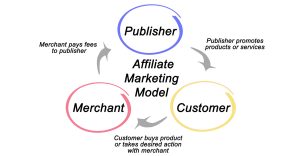
Share
Why Most Publishers Believe ‘Last Click’ Shouldn’t be the Only Commerce Content Attribution Metric
Content affiliates are great, but measuring their benefit can be tricky.
Affiliate marketing, in the end, is about creating new streams of revenue. When gathering affiliates to work with, it’s of the utmost importance to keep track of their success in creating sales. Having theoretically great ads and content doesn’t mean anything if they’re not moving the needle.
It can sometimes be difficult to measure the success of content pieces specifically, due to the nature of how they are consumed. Of course, you’re aiming for clicks, but how do you measure, for example, someone who may have read a blog post, never clicked a link, but was still compelled to buy the product being advertised in a later session?
It’s in both publishers and advertisers’ best interest to measure the utility of a piece of content accurately. Ideally, publishers should be paid a commission derived from the effect their piece may have had on sales.
A growing number of publishers are beginning to use affiliate networks’ attribution tools to advocate for bigger commissions from advertisers and even earn commissions from customers that they reached through their content; even if that read didn’t necessarily lead immediately to a “click”.
For instance, BuzzFeed is exploring several possible third-party attribution solutions that would allow them to build e-commerce campaigns that factor in view-through attribution, which would pay BuzzFeed commissions for people who bought featured products after reading their content.
Business Insider has seen a noticeable increase from affiliate advertisers sending more revenue to them thanks to multi-touch attribution products offered by affiliate networks.
A Digiday reporter got this quote from Nilla Ali, SVP of Commerce at BuzzFeed: “The main challenge for content publishers is that we’re typically at the start of the consumer purchasing journey (especially when we’re driving discovery through social). So the likelihood of winning on last-click attribution is very low.”
Even though last-click attribution is still considered the gold standard and currency that powers affiliate networks, some networks are acknowledging the problem and a few years ago started to allow merchants to spread their affiliate budgets around to better account for the value contributed by different publishers in their ecosystems.
Luckily for publishers, over the past few years adtech companies have created new technology that allows for the payment of “contribution bonuses” to publishers whose content customers often are reported to consume on the way to purchasing a marketer’s product.
Many affiliate networks have recently begun adding new layers of information about the publishers participating with them. Social media impressions or shares of posts containing affiliate links are some examples of ways to measure a piece of content’s success without just keeping track of clicks.
As we see more of a focus on these kinds of nuanced and advanced analytics, we’ll see happier advertisers and happier publishers. Both benefit from knowing more clearly how content affiliates perform. These kinds of “multi-touch” attribution products will better express at what point a decision to purchase was made.
We expect to see advertisers revise the way they spend their affiliate budgets with some of this new knowledge. As we begin to see companies spend more of their general marketing budget on affiliate, we’ll see more competition in the space. Since we’re happy to consider ourselves experts in the space, we fully understand that more competition is actually a good thing.
Companies interested in increased brand awareness have come to the right place when they decide to work with us. We’re looking forward to providing more insights and becoming better at measuring the impact of any kind of affiliate – but specifically content ones. The more accurate our analytics become, the better our clients feel and more likely we are to hit our projections.
Now that we’ve developed artificial intelligence and machine learning as part of our process, we plan to be even more reliable with our data. Can’t wait to see what’s next to come in the content affiliate world!





